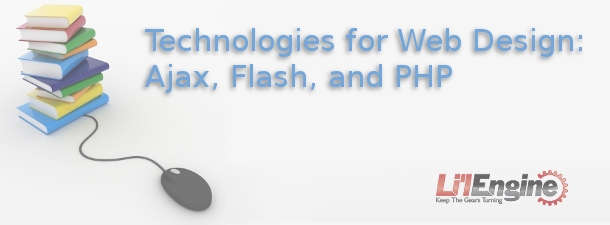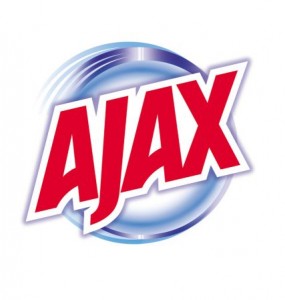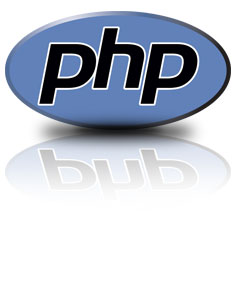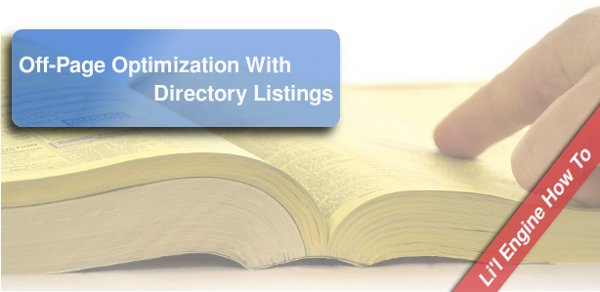The age of integrated technology is here! Microsoft has recently announced that their BING search engine is now integrating ChatGPT, the conversational AI. This means that you will be able to get more conversational answers for any queries you have regarding a topic of interest.
With ChatGPT, users can have an actual dialogue with the AI, allowing them to quickly access in-depth explanations, rather than the few points of information a simple search URL can provide. BING’s integration of ChatGPT will raise the bar in terms of AI, bringing optimized search conversations and results all in one place.
Introducing AI-Powered Conversational Search with BING and ChatGPT: introducing a revolutionary new technology merging two powerful AI concepts, allowing users to experience a natural search process using natural language. Harnessing the power of Bing search and ChatGPT, users will be able to ask complex questions and receive natural and comprehensive answers, not just results.
This remarkable AI driven search will allow users to find the most relevant answers to their questions in a way that feels almost conversational. Combining the powerful search capabilities of BING with the advanced natural language understanding of ChatGPT will be a game changer in how we search the internet.
AI-Powered Conversational Search provides users with a conversational search experience that goes beyond the predictive capabilities of traditional search. Through natural language processing and machine learning, AI-Powered Conversational Search can identify user intent in search queries, anticipate and suggest related topics, and deliver relevant, personalized search results in context.
With the advantages of natural language search and smarter results, AI-Powered Conversational Search helps to reduce cognitive load, simplify complex searches and provide users with the most relevant information in fewer clicks, making search more effective, efficient and enjoyable.
AI-powered conversational search provides many benefits to businesses who use it to better understand their customers. It allows businesses to provide customers with more personalized results that are tailored to their exact needs, quickly returning accurate answers to their queries no matter how they are phrased.
With AI-powered conversational search, businesses can quickly and easily access detailed insights into customer behaviors and the effectiveness of their product. This can help businesses to make better decisions when it comes to product development, marketing, and customer engagement. Furthermore, conversational search can provide businesses with real-time feedback on customer service responses, enabling them to promptly address customer issues and ensure satisfaction.
AI-powered conversational search allows businesses to both anticipate customer needs and transact with them more effectively, creating a seamless and valuable customer experience.
Bing, an artificially intelligent conversational agent powered by natural language understanding and advanced deep learning technologies, has developed ChatGPT, a new end-to-end open-source dialogue system. ChatGPT combines state-of-the-art capabilities in natural language understanding, natural language generation, and deep reinforcement learning.
It enables Bing to understand complex conversations and respond to queries in a more natural, conversational manner. ChatGPT provides a more personalized and engaging chatbot experience by delivering tailored, context-relevant responses drawn from previous conversations.
In addition, it can generate responses based on a user’s preferences and trends, making the conversation even more interactive and engaging. Bing’s ChatGPT will be available soon as an open-source dialogue system on GitHub, allowing developers to customize it to their own needs.
BING and ChatGPT offer numerous advantages for natural language processing. BING, an AI-driven search engine, helps simplify data-heavy tasks by automatically finding relevant content and displaying results in an organized manner.
Additionally, it helps save time by quickly finding questions to answer and extensive resources through its advanced search feature. ChatGPT, a conversational AI, allows businesses to provide automated customer service and communication.
Furthermore, it helps in increasing both customer satisfaction and engagement by automatically answering questions with natural language understanding and human-like responses. By using these two solutions together, businesses are able to drastically improve their efficiency while providing better customer service.
In today’s world, it has never been easier to get started with BING and ChatGPT. Utilizing the latest Natural Language Processing (NLP) technology, getting started with BING and ChatGPT can be as simple as downloading the pre-trained models and plugging them into a text-capable chatbot.
Once the models are downloaded, developers can customize BING and ChatGPT models to fit their specific use cases. By utilizing these models, developers can have better control over their chatbot conversations, making them more intuitive and engaging for users.
With these features, getting started with BING and ChatGPT is a great first step in creating an AI-powered chatbot.
In conclusion, the combination of AI-powered conversational search, Bing, and ChatGPT could have a significant impact on the world’s search experience. ChatGPT provides an important way for users to create search queries with natural language questions or commands and get results in record time.
Meanwhile, Bing is selecting and ranking the results based on its own AI-powered algorithm. All of this adds up to quicker and smarter search results that optimize users’ time and effort.
Ultimately, AI-powered conversational search has the potential to revolutionize how users search the web and make it easier than ever to find the information they need.
Web Moves is an Internet Strategist specializing in using up-to-the-minute technology to create innovative, effective solutions for clients. By leveraging BING’s integration of ChatGPT into search, our team of experts can maximize the reach of your brand, foster more authentic connections with customers, and gain valuable insights into customer preferences.
Our state-of-the-art expertise and strong market awareness allow us to assess quickly and create effective strategies tailored to your business goals. We provide customized campaigns that drive results and help grow your business in a w … ay that’s both efficient and sustainable.
Let us leverage the new opportunities that ChatGPT provides to create an enhanced digital presence and capitalize on all the resources at your disposal!

The advances in machine learning and natural language processing have enabled BING to take their search engine to the next level with ChatGPT. In conclusion, BING’s decision to deploy ChatGPT in search is another step towards an easier to use, assistant-driven approach to searching the internet.
We look forward to seeing the full impact of this integration on how we interact with the internet and get the answers we need faster.
 Mind mapping was popularized in the 1970s by British author Tony Buzan and today is a massively popular technique for visual thinking. The concept is simple: place a key idea in the center, branch out to associated ideas, then branch out again in ever-increasing detail. The result is a radial, tree-like structure that’s easy to scan and think about. Since those early days, numerous mind mapping software tools have been created, making the process way more sophisticated. Today, you can change colors and format, add images and videos, engage collaborators, generate presentations, and more.
Mind mapping was popularized in the 1970s by British author Tony Buzan and today is a massively popular technique for visual thinking. The concept is simple: place a key idea in the center, branch out to associated ideas, then branch out again in ever-increasing detail. The result is a radial, tree-like structure that’s easy to scan and think about. Since those early days, numerous mind mapping software tools have been created, making the process way more sophisticated. Today, you can change colors and format, add images and videos, engage collaborators, generate presentations, and more.
In this quick guide to mind mapping tools, we’ll mix popular “heavy hitters” with lesser-known applications.
MindMeister is a market leader in mind mapping software, with all the convenience of a web-based application. You can use it anywhere on any device, retaining your work across different platforms.
As with all similar tools, you begin with a blank space and place a single thought in the center. This is your “big idea” from which everything else will be derived. Clicking a simple plus sign generates a “child” concept that branches out from the center. To begin with, you might surround your big idea with four or five related concepts. Each of these can have their own “children”, and so forth. Formatting is easy because MindMeister provides a menu of options next to your mind map that you can use for changing fonts, background colors, etc. That’s where you also add images, videos and more extended notes to your map. Visual customizing options are almost unlimited.
It’s the extra features, though, that make MindMeister a powerful tool for personal and group thinking. You can easily turn your ideas into tasks and assign people, prioritize, create due dates, and mark as completed. You can even trigger email reminders. What’s more, you can export your mind map in multiple formats. PDF and text might be expected, but MindMeister also exports to rival mind mapping tools, which is smart. And you can generate a slide show out of your mind map. Finally, MindMeister makes collaboration easy, allowing you to add users and manage their permissions. There are good reasons why MindMeister holds the leadership position it enjoys today.
By contrast, Braincat is a little-known upstart with a radically different take on mind mapping. In Braincat, the visual map is not the beginning of your thinking process. It’s the end result —one of several possible outputs. That’s because Braincat is based on a quite different understanding of how the human mind works. While traditional mind maps begin with a “big idea” and then add increasing detail, Braincat assumes you’re starting out with a mass of unsorted stuff — and you don’t yet know what the big idea is! That’s why Braincat calls its process “reverse mind mapping.” You’re going from many to one, instead of one to many.
The key to Braincat is categorizing: deciding what headings to place your details under. You look at each item and ask yourself, “What kind of thing is this?” or “What is this a case of?” Once you’ve reduced hundreds of bits and pieces to four or five categories, you can take a look at those categories and ask yourself, “What’s the big idea?” Now you’ve arrived at that elusive center of your thinking: and the software automatically generates a mind map.
Braincat is ideal for any brainstorming situation — alone or with others — where ideas are flying thick and fast and you don’t want to kill creativity by organizing too fast. The mental process of categorizing gives you a special mastery of your material. And the visual mind map is your satisfying reward. It provides an “aha” moment when you clearly see the hidden structure of your thinking.
Another key feature of Braincat is sequencing. Whether you’re writing an article or planning a project, it matters what comes before what. The strength and limitation of a mind map are that it shows everything simultaneously. So Braincat also generates an outline that’s sequenced by your choices. That’s especially useful for writers, project managers, syllabus writers, and anyone who has to produce something out of their thinking.
For some, Braincat will provide a complete alternative to traditional mind mapping. For others, it will be the perfect complement.
MindNode is another major player in the mind mapping software universe. The underlying logic of MindNode is the same as MindMeister: a radial map with a central idea that branches out to subordinate concepts. The software has powerful formatting tools to make your mind map visually interesting and lots of options for uploading additional content.
Again, though, it’s the additional features that make MindNode a leader in its class. One of these is “quick entry” which allows you to drop ideas onto the page without organizing them first. This may sound similar to Braincat, but it’s different because in MindNode you drag and link the ideas into a mind map. This works best if you don’t have too many items to begin with, otherwise, you’ll get visually overwhelmed.
MindNode boasts what it calls an “infinite canvas,” meaning your map can expand in all directions way beyond what’s shown on the screen. Fortunately, there’s a “focus mode” that allows you to look at just one element of your mind map — a single idea and its connected details — while hiding the rest. Upload options include the ability to add an image and capture any text it includes with in-built OCR (optical character reading). Turning ideas into tasks is also easy, and there are some neat project management tools. Finally, MindNode has a tagging system that helps you find things fast, which is great for a really large mind map on that “infinite canvas”!
TheBrain is all about mind mapping at scale. The fundamental logic is familiar: a central idea with radiating branches and sub-branches. You can link ideas that appear on different branches, drawing a line between them and naming the link. You can also create “jump thoughts” that are not yet connected to the overall mapping structure.
The key distinction of TheBrain is how it organizes large numbers of inter-related mind maps. With a single click, any idea, at any level of the hierarchy, becomes what is called the “active thought.” It moves to the center of your screen and is now the “big idea” for a distinct mind map, with its own subordinate elements. This means that just by clicking, you can generate an unlimited number of mind maps, each centered on its own “active thought” — and they are all interlinked. Every “active thought” can have its own associated notes, links, images, videos, etc. These are accessed in a panel to the side of the mind map.
The intention of TheBrain is to provide a vast digital memory that resembles the way your own brain holds and links information. Needless to say, the success of this solution depends on its searchability. In the side panel, any search term will generate a list of thoughts, links, associated files, or uploads. When you click a result, you generate a mind map with that element in the center. All the material directly connected to your search result will appear with it. TheBrain is an interesting fusion of mind-mapping and digital filing and is used by a loyal following of both individuals and corporations.
In conclusion…
Mind mapping is a powerful way to visualize your ideas and has been adopted enthusiastically by millions of people. Digital applications have greatly expanded the uses of this simple tool, and no doubt the evolution will continue. Conventional mind mapping works best when you can easily organize your thoughts as you capture them, or you only have a few ideas to drag and drop around a screen. If you’re starting with a mass of unsorted ideas and information, you might want to explore “reverse mind mapping” as a different kind of process. For maximum productivity, you’ll probably want both kinds of tools!
A good landing page could increase conversions by up to 300%. Stop directing people to the homepage and drive them towards targeted content! This infographic will help you to put together the perfect landing page – from tips on message prioritization to CTAs – that’ll foster engagement and grow your revenue. (more…)
I’m sure by now everyone has seen that Google allows you to set up authorship credit for the content that you create. Credit is given by a picture of the author along with a link to the author’s Google Plus page as well as a link that allows you to read more posts by the author.

Setting this up for a blog with only one author that is posting content is pretty straight forward and there is a lot of good information available on how to do it. The problem comes when you have a website or blog that has multiple or more than one authors posting content. Unfortunately the steps that would allow this to work in a single author instance do not work when there are multiple authors and you would end up with the wrong author receiving credit for the content.
After a fair amount of searching I was still not satisfied with any of the answers I had found on how to create the authorship credit when there is more than one author. A lot of the posts that I found contained old and outdated information or steps that are honestly not necessary to this process. Finally after piecing together a bunch of information, I was able to find a solution to my problem that was surprisingly even easier than I had expected! In these next couple sections I will cover how to configure the author credit for both of these scenarios (single author or multiple authors) in WordPress.
It’s no big news that Chinese market is growing with an impressive speed and more and more businesses turn eastwards – both for production and marketing. Over a billion people live inside the Far East giant borders – a healthy reason to address the region in order to increase sales as well as exposure.
The news is, however, that the internet content is now also part of the trend. China has reportedly surpassed USA in the number of internet users in mid-2009, and although English is still the primary internet language (42 percent of almost two billion of online “population” worldwide), Chinese is in solid second place, with about 32 percent. And since China is still less technologically advanced than the Western Countries, the number of potential Chinese speakers, who will soon be joining the online world is far greater than that of the English language carriers.
And with the Chinese government now requiring all English content in China-based websites to be accompanied with local Mandarin translation, the number of webpages in Chinese is about to increase immensely. And, restating the above thought about more and more companies regarding China as a prospective market, it seems that the near future of online marketing can easily shift toward Chinese content.

Let’s play a game. Let’s pretend you are the webmaster of www.reallyawesomeflannelrobes.com and you have a supply of awesome flannel robes. How do you plan on selling your flannel robes? I guess you’d want to do some SEO, right? So you optimize your website for the phrase “buy flannel robe”. You hire some hot-shot SEO firm (or maybe you do it yourself!) and they do a great job! After a short while, you’re kicking butt on all your primary keywords. You’re even ranking #1 for your best keyword, “buy flannel robe!”.
…almost.
Because when you do a Google Search for “buy flannel robe”, what do you find listed above your #1 ranking? A little box that says “Shopping results for ‘buy flannel robe'” and a listing of products from Amazon.com, L.L. Bean, Plow & Hearth, and Vermont Country Store. What’s more, these listings have prices, pictures, and a description of the item. Worst of all, these listings have reduced your CTR to a dismal percentage for your coveted #1 ranking. What’s going on here?
Back in mid-2007, Google made a major change in their search algorithm called Universal Results. This update integrated Google’s regular search functions with other pieces of Google’s search database, most prominently images, videos, and yes, shopping results. When a user searched for certain keywords, Google began returning results from other realms of its search database if it deemed them to be relevant. These integrated results could appear organically, or they could be tripped by certain flagged words. The words ‘pictures’ or ‘photos’in conjuction with any other search topic are highly likely to return results from Google Images. The words ‘video’ or ‘clip’ or ‘movie trailer’ in conjunction with any topic is likely to return results from Google Videos. And yes, the words ‘buy’, ‘purchase’, or ‘cheap’ in conjunction with any topics are likely to return results from Google Shopping (formerly Froogle).
So that’s it. You’re doomed right?
Not necessarily.
Let’s take a look at these results. clicking on the first shopping result in our flannel robe example brings us directly to the amazon.com listing for the State O’ Maine Men’s Big and Tall Plaid flannel robe. This makes something immediately clear. Google Shopping is not a vendor, but a comparison shopping database. When you search for something in Google Shopping, the database evaluates its listed products and returns results that, based on an algorithm, have been determined to be the most relevant. So where does it get this knowledge of listed items?
The answer is Google Base. Google Base is an archive of information submitted by users from across the web. Almost any kind of data can be submitted in almost any kind of format. The most widely used portion of the Google Base platform, however, is the Google Merchant Center. In the Google Merchant Center, vendors like Amazon (and you too!) can submit a data feed of product listings that comes directly off their websites. The data feed keeps Google Merchant Center constantly updated on what products are on your website and the Google Merchant Center powers Google Product Search (Shopping).
So what about this data feed that comes off your website, hmm? This feed is a service provided free by many popular e-commerce platforms or as a paid service from independent developers. You can think of it as a kind of RSS feed for Google Merchant Center to ‘read’ your products. In addition to the Merchant Center, you can submit this feed to a variety of comparison shopping engines like Shopzilla, Nextag, Bizrate or Price Grabber. All of these comparison shopping engines use your data feed to power their search results. If your data feed has provided information that the comparison shopping engine thinks makes your product highly relevant to a product search query, your product will be listed first. So how do we make sure that our data feed is providing the right type of information? This process is called Data Feed Optimization, or (DFO). It is also commonly referred to as shopping feed management. DFO is the process of ensuring that your data feed is being comprehended by a comparison shopping engine like Google Product Search to the greatest of its potential and serving up your products as search results when they are most relevant.
So how do you do this?
Basic data feed optimization can be split up into a few specific partitions. When embarking a data feed management campaign, the first thing you should do is establish some kind of evaluation metics. Whether you use click counters on your website, with the comparison shopping engine or with a third party doesn’t really matter; you just need some way to evaluate the results of your actions. The nextand easiest thing you can do is make sure your tax and shipping costs are updated for every product you list. If you don’t believe me on the importance of this, do a Google Product Search for ‘digital camera’ and click on the first link. You’ll see a list of vendors where you can buy that exact camera (at the time of this writing, it’s a Canon Powershot SX20). The prices seem to be pretty uniform across the board, and it becomes immediately obvious that you can get this camera with free shipping (several vendors are offering it). Now look down at Sears. Sears has this camera for sale. Does it offer free shipping? Maybe. You can’t tell, however, because Sears hasn’t updated its data feed to ensure its shipping and tax info are being listed. What do you suppose the CTR on that listing is? That’s a rhetorical question, because off course it’s just about nil.
In DFO terms, accurate and updated tax and shipping info are equivalent to meta-tags in SEO. It’s a super easy fix that there’s absolutely no excuse to get wrong. Seeing shipping info compels a consumer to click in the same way a meta-description with a powerful call to action does.
Also east to fix are the listing title and listing description. This is an area of DFO that has no hard and fast rules; it’s best to just play around with a few different combinations until you find something that fits. All DFO experts agree, however, that the listing title should be optimized with both consumers AND the Google Product Search algorithm in mind. What is the primary keyword associated with your product? What IS your product? Does it have a significant brand name? At the time of this posting, I made a search for “calvin Klein Dress Shirt” in Google Product Search. The #1, #3, and #6 results all used the phrase “Calvin Klein Dress Shirt” in the listing title. None of those listings were calvin Klein’s product website. Calin Klein’s highest listing for its own product on its own website was #8. This listing did NOT use the phrase “Calvin Klein Dress Shirt”. While not being decisive empirical evidence, these results strongly indicate that the usage of the search keyword in the listing title can affect ranking. DFO industry experts recommend trying a variety of title combinations and evaluating the performance of each. Some of the ones you can try from our example are:
[keyword][brand][feature]—ex.: Men’s Dress Shirt, Calvin Klein White
[brand][feature][keyword]—ex.:Calvin Klein White Men’s Dress Shirt
[brand][keyword]—ex.:Calvin Klein Men’s Dress Shirt
[feature][keyword]—ex.:White Men’s Dress Shirt
Now that the easy stuff is out of the way, we can tackle the real meat of DFO: feed mapping. The goal of feed mapping to provide information in your feed that categorizes every single product in your product portfolio into a corresponding category on a comparison shopping engine based on attributes. When I said every single, I meant every single. You should aim for a 100% listing rate on your products in the CSE’s. Every product you DON’T get listed might be your best-selling, high-margin, high competition product you were anticipating major sales on. This is easily checked by comparing the number of listings on your website and the number of your products listings showing up in the shopping engine (should be available from the marchant login dashboard). When you submit your data feed to say, Google Merchant Center, you’ll notice that you have options for setting your attributes. These attributes are split up into 4 categories, being required, recommended, optional and custom. You want to use them ALL. You need to categorize every single product in your product portfolio and map it with the attributes available on your comparison shopping engine. Google Product Search is not the only CSE you need to worry about and each website (e.g. Shopzilla, NexTag) uses different attributes. That means you either need A. a different data feed for every CSE you submit to, or B. one very fat, very comprehensive data feed that organizes all the needed attributes together.
Nothing portrays illustrates data feed optimization better than heading to the ‘miscellaneous’ or ‘other’ pages in a CSE. Here, you’ll find dozens of incorrectly attributed items languishing unsold, such as children’s sheet sets that should be in the Home Bedding Category or remote controlled cars that should be in the Toys or Electronics Category. When a consumer searches for “chidren’s bedsheets”, the first thing they’re going to do is begin filtering with the sidebar, and the first filter they apply will be the tab that says “View 234897 Results in Home Bedding Category”. With that first intuitive filtuer, your sadly misplaced product loses all chances of ever being seen.
For a data feed going to Google Product Center, GPS recognizes a product_type attribute that can be added to the data feed that can be mapped to the dozens of categories GPS has. Other shopping engines use other protocols to map the feeds into categories. Every shopping engine needs to be accounted for. To keep data fresh, it’s suggested that you submit your data feeds every day. Google Product Search in general is recognized as having a preference for fresh feed data. To test your data feed optimization efforts, you can try splitting up your products into several different feeds with different attribute methodologies. If you list 200 men’s wool blazers on your website, will they rank better on on a Comparison Shopping Engine in the “Jackets and Blazers” category or the “Businesswear” category? Will they rank better as “Wool Men’s Blazers” or “Men’s Wool Blazers”? Is it advantageous to list them as “Ralph Lauren Men’s Wool Blazers” or “Men’s Wool Ralph Lauren Blazers”? To test these questions, you could create two feeds, one for each, and test them over a two week period, submitting every day. Then try a a few weeks with no data feed optimization (or use your e-commerce platform’s default XML feed) and check your metrics for a difference.
Now it should be obvious that if you are a vendor and you haven’t optimized your data feeds for the Comparison Shopping Engines, you should be. I’ve outlined the starter steps here, but there’s plenty more detail to investigate as far as DFO goes. I know this has been a long and potentially confusing article with a lot of thick material to get through, especially near the end. I anticipate plenty of questions and invite any inquiries in the comments section.
-David Fishman, blogger and search engine marketer lives and works in Atlanta, GA. He is an employee at Response Mine Interactive, a digital marketing agency offering online marketing solutions to new customer acquisition. his hobbies include link building, SEO, and blogging about how to make sushi. Much thanks to Lilengine.com for this guest-post opportunity.

Everything you read about SEO at some point comes back to the same thing: offer great content. You can put every SEO tactic to work at the same time, but if your site doesn’t have great content, it’s like putting Robert DeNiro in a Valentino cocktail dress and Christian Louboutin heels: it’s worth a look, but you’re probably not going to go back to it very often. Whether you write the content in-house or outsource it is really a matter of your staff makeup, your budget, and your preferences.
First of all, people usually don’t “read” on the web. It’s like a glossy magazine. People scan pages looking for images or headlines that appeal to them and often skip past entire blocks of text. Good web content has number of attention-snaggers: the occasional boldface font, headings and subheadings, and plenty of white space around the content. Headings need to be simple and clear. Links must stand out by way of color or underlining, and lists, whether bulleted or numbered, should be used where appropriate. Lists shouldn’t have more than about 10 items, and in general, the shorter the list the better.
The first screen shot is part of a page from Ars Technica (arstechica.com). This is how good web content should be displayed. The title indicates that there will be a list. The graphics are clean and include a helpful screen shot. The headings break up the text into digestible chunks, and there isn’t a bunch of annoying flashy stuff trying to give you a migraine.
Keep in mind that people read screens about one-quarter slower than they do a printed page, and that screen reading is harder on the eyes. Keep the fonts at 10 or 12 point size. Internal links will let your readers jump to the parts of the page they’re interested in. If your external links open in a new window, let your reader know. Some users flip out when they click a link and suddenly windows are opening everywhere. The anchor text to your links should be descriptive. Sure, you’re going to use the occasional “click here,” but try to keep that to a minimum and use anchor text that’s descriptive.
If you’ve written a page that you expect will be printed out for reference purposes or whatever, here are a few points to bear in mind. Keep the links to a minimum for stuff to be printed, since they won’t be clicking them from their paper. If you make a “print version” of a page, indicate in your robots.txt file that the print version shouldn’t be crawled. That will ensure that you don’t get dinged for duplicate content.
On paper, serif fonts are easier to read. Who knows why, but it’s true. Your print pages should be black text, white background, and a minimum of graphics. One of the fastest ways to incur the wrath of a visitor is to give him a print page that will drain all the ink from his printer.
Make sure each page uses its <title> tag properly. The information in these is seen in search engine listings, history listings, and favorites. They’re what other webmasters use as link text when they link to your site. The first word in the title is most important. Think about it: if your visitor has half a dozen tabs open in her browser, the titles of those tabs will get shorter and shorter until they’re just one word long. Since that one word is the first one in your title tag, make it count.
The addendum to this rule is that if you have a large site, make sure each page has a title all its own. Sure, this is a pain and it’s tedious, but your site will perform better in the search engines if you go ahead and do this.
 Your content should start with the conclusion. If you write your pages so that you build up to a whammo conclusion, nobody will read it because they won’t get that far. This isn’t Walden, and you’re not Henry David Thoreau. You want to start out with the big news and then go into the details. The phrase “above the fold” is even more important to web readers than newspaper readers. They’re not likely to scroll down for something unless they’re hooked by the first or second sentence.
Your content should start with the conclusion. If you write your pages so that you build up to a whammo conclusion, nobody will read it because they won’t get that far. This isn’t Walden, and you’re not Henry David Thoreau. You want to start out with the big news and then go into the details. The phrase “above the fold” is even more important to web readers than newspaper readers. They’re not likely to scroll down for something unless they’re hooked by the first or second sentence.
Writing good web content is work, and you may not have the time or inclination to do it. That’s when you consider outsourcing. You already know that your website needs to be updated regularly, and if you don’t have someone on your staff who’s gung-ho to do this (and can be the alloted the necessary work time), then you should consider hiring someone to do it.
If you hire a freelancer or go through an agency, it is important to clearly define an initial job for the writer. Try to be as specific as possible as to tone, topic, length, and how densely keywords or key phrases need to be included. Consider their first assignment a test run and see how well it meshes with your needs. You may want to keep this person on hand regularly because updating your site needs to be regular. It almost doesn’t matter how often you update – though the bigger tech blogs are updated more than once a day – but regular updating is a big plus and it builds up your site’s archive of valuable information while you’re building PageRank and ascending in the search engine rankings.

Fortunately, to have a great website today you don’t have to be an HTML wizard or have mad programming skills. There are plenty of technologies for web design that let you have a dynamic or interactive interface on your web pages. Four of those technologies are Ajax, Flash, PHP, and ASP.
 Ajax is short for asynchronous JavaScript and XML. It is a group of web development techniques that are used to create interactive web apps. Using Ajax, web applications can, for example, retrieve data from the server in the background without changing the display and behavior of the page the user is on. XML is not technically required, and the requests from the servers do not have to be asynchronous.
Ajax is short for asynchronous JavaScript and XML. It is a group of web development techniques that are used to create interactive web apps. Using Ajax, web applications can, for example, retrieve data from the server in the background without changing the display and behavior of the page the user is on. XML is not technically required, and the requests from the servers do not have to be asynchronous.
But it’s the asynchronous aspect of Ajax that people love. In standard web apps, interaction has to happen on a step by step basis in a frustrating game of click and wait. But with Ajax, the JavaScript that’s loaded as the page loads handles data validation and manipulation without a trip to the server and back. While it’s changing the display based on a visitor click, it’s sending data back and forth to the server, but the data transfer doesn’t depend on the customer’s actions. The result: almost total elimination of the slow click-wait cycle.
Ajax uses a combination of HTML and CS for creating and styling information. It is, in short, used so that web pages feel more responsive by exchanging small quantities of data with the server while working in the background, so the web page doesn’t have to be reloaded whenever the user requests a change. This goes a long way to speed up the page and make it more user-friendly. That’s because instead of having entire applications posted back to a server, you can have only a small part of the page update independently of the rest of the page. Bottom line: visitors will hate you if you make it so the page has to reload every time they respond to an on-page interactive component.
 Flash is used to add, well, flash to your website. It isn’t easy to learn to write good animations using Flash, so sometimes developers learn to use Flash and then feel like they have to use it everywhere to justify having spent so much time learning it. But you have to be careful with Flash because there are drawbacks to using it. For one thing, search engines have a hard time crawling websites that heavily use Flash graphics, so it’s hard to rank high with an all-Flash website. So it’s not a good idea to use Flash just because you can.
Flash is used to add, well, flash to your website. It isn’t easy to learn to write good animations using Flash, so sometimes developers learn to use Flash and then feel like they have to use it everywhere to justify having spent so much time learning it. But you have to be careful with Flash because there are drawbacks to using it. For one thing, search engines have a hard time crawling websites that heavily use Flash graphics, so it’s hard to rank high with an all-Flash website. So it’s not a good idea to use Flash just because you can.
Whether using Flash is a good or bad choice depends on what your site is for. Flash is best suited as an animation tool, and it’s supported on almost all the web browsers that people use, so you can be pretty sure that if you build a site with a Flash plugin, visitors will see it as you intended it to be seen. Video is a good Flash application because it doesn’t require a plugin like Windows MediaPlayer, and Flash is good for games, because it has better browser support than Ajax. Also, vector graphics look prettier in Flash, and it allows image replacement for special fonts on a site.
On the other hand, unless Flash is optimized for a site, Flash applications can be big and take a long time to load. Sometimes the entire Flash site has to be loaded before it can even be used. People hate this. And frankly, that little graphical countdown clock is small consolation to those waiting to use a site.
Flash usually disables the browser’s “back” button. That means that if a user clicks it while deep in the bowels of a Flash site, they’re taken to the website they were on before they got to the Flash site. If they want to return to the Flash site, they have to re-navigate back to where they were on the Flash site. Face it: the average web surfer has the attention span of a gnat on crack and probably isn’t going to go to all that trouble twice.
 PHP (which stands for hypertext preprocessor) is a scripting language that is open-source so that users have access to the source code and can build, extend, or otherwise customize it for their own use. PHP mostly works as a filter, as it takes input from a stream or a file containing text and / or PHP scripts and outputs another data stream. Usually the output is HTML. While it was originally designed to make dynamic web pages, PHP focuses mainly on server-side scripting now. This is basically a way of making web pages interactive. PHP is also popular in the development of frameworks that provide the structure for rapid application development in which apps are written as they are being planned, making it easier to crank apps out faster.
PHP (which stands for hypertext preprocessor) is a scripting language that is open-source so that users have access to the source code and can build, extend, or otherwise customize it for their own use. PHP mostly works as a filter, as it takes input from a stream or a file containing text and / or PHP scripts and outputs another data stream. Usually the output is HTML. While it was originally designed to make dynamic web pages, PHP focuses mainly on server-side scripting now. This is basically a way of making web pages interactive. PHP is also popular in the development of frameworks that provide the structure for rapid application development in which apps are written as they are being planned, making it easier to crank apps out faster.
There are lots of other technologies for web design besides Ajax, Flash, and PHP, but these are three that are common. If you want to learn the basics of Ajax, go to http://www.learn-ajax-tutorial.com/. To learn more about Flash, go to http://www.w3schools.com/Flash/default.asp. If you’re interested in learning PHP, then try http://devzone.zend.com/article/627. While these are designed to make your site faster and more attractive and fun to visit, they aren’t the whole picture. Without content, the prettiest site in the world isn’t going to keep people coming back.

Submitting articles to article directories is what is known as “off page optimization.” Off page optimization is doing what you can to drive traffic to and create back links to your actual web pages. The best search engine optimization involves both on page and off page optimization. Submitting articles to directories won’t help much if your pages have little or no useful content, or if your pages themselves have not been optimized through the use of keywords, meta tags, and anchor text links. But once you have your pages in top shape, submitting articles to directories can definitely give your website’s traffic a boost.
Articles promoting your website should soft sell your site. In fact, many article directories have strict rules about how many so-called self serving links you can include in your articles. That’s because people don’t look for articles in order to be sold a piece of software or a new nutritional supplement: they read articles to gather information. Your job is to provide that information and also provide a way for the article reader to get to your site if he or she so chooses.
Even the article directories that are quite strict about links to your website in the content do provide “about us” boxes or “resources” boxes where you can include links to your site, and you should definitely do this. Anyone interested in the article content enough to want more will be looking to the resources box to link to more information. Because there are so many free article submission directories, you have plenty of outlets for articles about your site. You won’t have a huge influx of traffic overnight, but over time, your PageRank will increase, as will your traffic. Below are several of the advantages and a few disadvantages to directory submission of articles.
As helpful and useful as article directory submission is, there are a few downsides to it.
As an example, look at the first screen shot, where I have entered three woodworking terms into the entry box: woodworking tools, sanding blocks, and table saws. In the second screen shot you see just part of a long list of suggested keywords along with their relevance and search volume. At first glance it looks like the terms “woodworking hand tools,” “antique woodworking tools,” and “woodworking tool” could be good keyword candidates because they’re highly relevant, and the search volume is high, but not so high that I can’t work my way past the competition.
The moral of the story is: when you’re writing articles for submission to articles directories, ignore keywords at your peril. And, just FYI, the top five articles directories, according to vretoolbar.com and based on Google PageRank and Alexa Ranking are as follows: ezinearticles.com (Alexa=131; PR=6), articlesbase.com (Alexa=451; PR=5), buzzle.com (Alexa=1305; PR=5), goarticles.com (Alexa=1601; PR=6), and helium.com (Alexa=1872; PR=6).